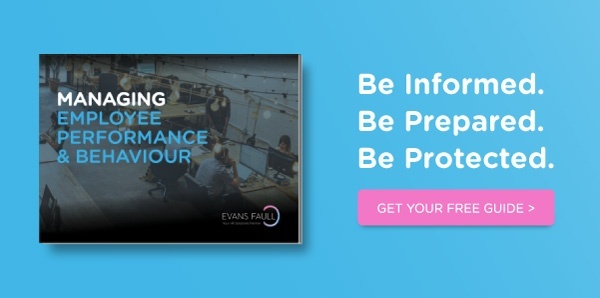How to Conduct Employee Performance Reviews in the New Era
There are 4 common schedules for employee performance reviews; annually at the anniversary of their commencement, annually at the start of the financial year, annually at the start/end of the calendar year and more frequent goal-based check-ins.
Regardless of the schedule, many businesses have not been equipped to undertake thorough employee performance reviews in their most recent period.
The sudden transition to remote work alongside altered business practices, duties and responsibilities have meant that their existing processes and assessment criteria aren't a great fit for the new state of play.
If that's the space you've been in, it's understandable - but it's time to make an adjustment.
Performance review foundations
A performance review process is an opportunity to re-calibrate the objectives and direction for each of your employees and the business’ needs. If this is carried out well, performance reviews align employees to the business' goals.
The importance of getting this right can't be overstated.
Therefore, the heart of any performance management review process is the conversation between the manager and the employee; this helps the employee appreciate where the business is at, where they are at, and how they contribute to the bigger picture.
Each discussion must be unique as each employee has their individual career goals, unique skills and capabilities. It is to be employe-centric in every sense of the term, as this is the foundation for increased trust, accountability, interest and success.
Unfortunately, many people dislike performance conversations as they are commonly one-way discussions focused on goal attainment as the sole contingent for a salary increase.
Such reviews miss an enormous opportunity to show appreciation and acknowledgement, discuss training, development and career goals - both sort and long term. Instead, they attempt to tell a complex story with an almost binary outcome.
More than a salary review
Employees are hungry for feedback about performance; they want guidance & coaching. They want to improve. This encompasses a desire for an increased salary, absolutely, but the salary review is only part of the process, the part which follows the necessary context for the determination that has been made.
To navigate this process, managers should be prepared to have meaningful and impactful dialogue. They should coach each team member through a process based on KPIs, behavioural competencies and professional development. By focusing on these aspects, ambiguity is reduced, and both manager and team member can undertake a contextual and honest evaluation.
Such an evaluation explores “how” an employee contributes (behavioural competencies) as much as it is about “what” they achieved (KPIs). It is a discussion grounded in values, company-wide goals and priorities, which illustrates the true impact of their performance and relationship to the overall assessment of their performance.
Despite the fact that remote work and rapid operational change have become the new normal, it is still vital to have regular and transparent conversations. Ask each employee how they are coping; how they are managing their work-life balance and show them that:
- they work for an organisation that cares for their professional and career growth;
- you factor in the changing nature of goals
- you focus on employee contributions and give employees the opportunity to discuss their situation;
- you look to the wider team for feedback, too as you don’t have full visibility of their day-to-day workload (You can use a 360-degree feedback tool to collect and acknowledge feedback from various stakeholders)
- you understand that COVID-19 has presented challenges in setting relevant long-term goals and regular check-ins will help keep everyone in the loop about individual and business priorities.
In this remote working era, we need to master how to share the same warmth and openness in a virtual discussion as well as a face-to-face conversation. Being considerate and deliberate with the language you use, your tone of voice and body language (yes, even on zoom) can make or break the employee’s motivation.
Make sure you hear what your team member has to say and listen actively by incorporating both perspectives into the performance plan.
As leaders, we must recognise and understand how all levels of employee performance have impacted the business. Otherwise, you can't be truly purposeful in designing for the best possible outcomes.
Coaching an employee who is underperforming requires preparation, with data on KPIs and examples of their output vs your desired outcomes. This gives you the best chance of having the employee walk away from the discussion feeling empowered, clear on the areas for improvement and how they can go forward positively in their development journey.
By following these steps, you can have productive and enjoyable two-way discussions with your team.
If you feel that it’s time to re-imagine and re-launch your performance review process, we can help you create a meaningful process that aligns with your company goals and values and prepare your team for these conversations.
If you want to implement the HR solutions outlined in this article, book a call with Amanda to explore how Evans Faull can protect and support your business.
Share this
You May Also Like
These Related Stories

How to Avoid the 5 Most Common Recruitment Pitfalls
Are Your Casuals Really Part-Time Employees?




No Comments Yet
Let us know what you think